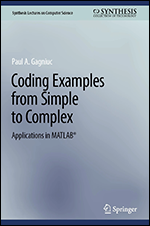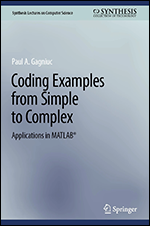Source Code Exploration with Memcached: A Beginner's Guide to Understanding and Exploring Open-Source Code
- 2h 27m
- Prashanth Raghu, Praveen Raj
- BPB Publications
- 2024
Open-source development has been the single most significant contributor to the development community, and the contributions are used across the IT landscape including corporations, universities, schools, etc. Despite being highly popular, contributing to open-source and navigating open-source systems has always been challenging. Some reasons could be that most open-source developers hold other day jobs, which might also be their regular work.
Memcached is one of the largest commercially and non-commercially used caching systems in the IT world, with a relatively smaller codebase that enables developers to understand the basic skeletal of source code structures while enabling developers to hone their skills towards the development of high-quality production-grade, enterprise-ready open-source software. Most server-based technologies.
Open-source development skills enable developers to understand the intricacies of softwares, enabling robust decision-making while choosing technologies over trends and making mature decisions on a day-to-day development basis. This book is for all programming enthusiasts and is designed to be a Source code 101 level book, but it can help developers elevate to architect-level decision-making as well as architects to make solid software decisions while building the systems.
KEY FEATURES
- Learn implementation and design of Memcached.
- Understand programming practices and structures across open-source systems.
- Understand the principles of LRU cache management and slab allocation.
- Discover real-world applications of Memcached in industry giants.
WHAT YOU WILL LEARN
- Uncover the secrets of Memcached, a high-performance caching system.
- Learn about security measures safeguarding Memcached's integrity and scalability.
- Understand large-scale use cases of Memcached and how to continue further study of open source systems.
- Students can learn the implementation of most concepts through their journey with a practical approach.
WHO THIS BOOK IS FOR
This book is designed for software developers, system administrators, and IT professionals who want to delve into the world of Memcached, a high-performance caching system. It is a comprehensive guide to Memcached's architecture, design, and implementation for all programming enthusiasts.
About the Author
Praveen Raj has been actively involved in the open-source community for the past seven years, primarily contributing through Intel® Security Libraries. His journey in the world of open source has been characterized by a dedicated commitment to the development and enhancement of security-related technologies, and he has contributed to the container runtime community focussed on security such as containerd, ocicrypt, ocicrypt-rs and katacontainers. Currently is working for Intel® Trust Authority. He has completed his master's from the Rashtreeya Vidyalaya College of Engineering, Bangalore, and his Bachelor’s of Engineering from PES Institute of Technology Bangalore.
Prashanth Raghu is an open source enthusiast who believes in the transformational capability of Open source software in one’s learning journey and enabling him to make solid decisions during architectural designs. He believes in writing books that can be considered documentation of large code bases to enable and accelerate one’s learning. He is currently on a startup to create products for children and provide solutions to startups. He is a Carnatic flutist by passion and is actively mentored by Guru Vid Sri S Venkatesh and Karnataka Kalashree Vid Sri HS Venugopal. He has completed his master's from the National University of Singapore and his Bachelor’s of Engineering from PES Institute of Technology, Bengaluru.
In this Book
-
Coloured Images
-
Source Code Explorations in Open-Source Systems
-
Getting Started with Memcached Design
-
Design of Event Loop
-
Server Initialization
-
LRU Cache
-
Slab Management
-
Server Authentication
-
Protocol Definitions
-
Background Processes
-
Proxy Server Design and External Storage
-
Using Memcached at Scale
-
Continuation of the Exploration Journey




